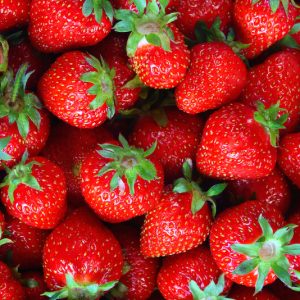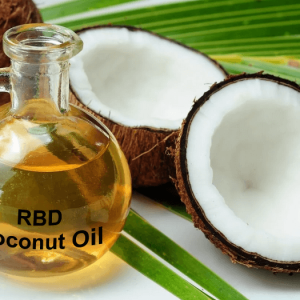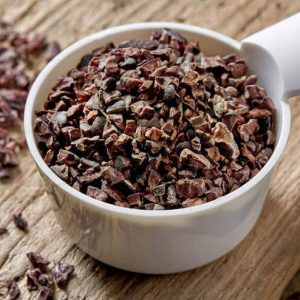
Do you enjoy napping? It turns out that power naps can actually maximize performance, restore alertness and reduce mistakes and accidents. Just make sure you don’t sleep past 30 minutes, otherwise you’ll wake up feeling more tired than when you first laid down. Why? The science behind power naps explains this phenomena, and it all has to do with our brains.
Humans sleep just once a day, compared to over 85% of mammalian species that sleep more than once. Scientists still aren’t sure whether we are naturally monophasic (sleep once per day) or polyphasic (sleep more than once per day), but it is clear that a majority of us aren’t getting enough sleep, because our bodies are telling us so.
So if you’re in a sleep deficit, you may want to think about integrating some power naps into your routine. But what exactly is a power nap?

Different Types of Naps
Power naps are sleep sessions that happen during the day between 1:00 – 4:00 pm. They last between 10 and 30 minutes, because any longer, and you run the risk of developing “sleep inertia” – the unpleasant groggy feeling you get from napping too long. Sleeping past 4:00 pm will disrupt your regular night time sleep, so staying away from that hour is key as well.
Sarah Mednick breaks down the different power naps as outlined below:
10 – 20 minute naps:
This nap time is great for a quick energy boost and improved alertness. This length keeps you in the lighter stages of non-rapid eye movement (NREM) sleep, which makes it easier to go about your day after waking up.
30 minute naps:
Sleeping for only 30 minutes may cause something called “sleep inertia,” where you get a groggy-like feeling after waking up. This effect can last for up to 30 minutes before the nap’s restorative benefits become apparent. This happens because we are interrupting stages of entering into deep sleep, which confuses our body and makes us more tired.
60 minute naps:
A 60 minute nap is best if you want to improve your memory for facts, faces and names. It includes the deepest type of sleep, called slow-wave sleep. The downside is that you may feel groggy after waking up.
90 minute naps:
90 minutes is the time it takes for you to undergo a full sleep cycle (the lighter and deeper stages, including REM (rapid eye movement) sleep (the sleep where we start to dream)). 90 minute sleep cycles improve emotional and procedural memory (i.e., consolidating memory to riding a bike, playing the guitar) and creativity. Sleeping for 90 minutes instead of 30 or 60 minutes prevents sleep inertia, because you aren’t interrupting the 90-minute sleep cycle (whereas with 30 and 60 minutes, you interrupt it).
While we’re asleep, the brain cycles through a pattern that lasts between 90 and 120 minutes. These stages include non-rapid eye movement (NREM) and rapid eye movement (REM) (associated with dreaming). The deepest kind of sleep is NREM sleep, where we enter into slow-wave sleep. This is when we consolidate memories related to facts, places and faces, and is a main benefit of the 60-minute power nap. The 90 minute nap is one complete sleep cycle, which help aid in creativity and emotional and procedural memory (with less sleep inertia).
Mednick also makes note of four different types of naps:
• Planned Napping: involves taking a nap before you get tired. Usually a good thing to plan if you know you have a long night ahead.
• Emergency Napping: when you need to take a nap because you’re so sleepy that you can’t engage in your current activity. I used to get this during university and studying, but it is suggested to take a nap in scenarios when you get sleepy behind the wheel, or while operating heavy machinery.
• Habitual Napping: taking a nap at the same time every day.
• Appetitive Napping: you are addicted to napping – you nap only on the basis of pure enjoyment.
Health Benefits of Napping
Taking a nap is an excellent time for the brain to reboot – it helps increase mental alertness, learning, memory and performance. In 1995, NASA published a groundbreaking study that looked at the beneficial effects of napping on sleepy military pilots and astronauts. They found that a 40-minute nap improved performance by 34% and alertness by 100%. Planned naps are also extensively utilized in the medical community among nurses, doctors and medical students who work around the clock. Results from these studies have shown that napping improves performance and subjective report in physicians and nurses compared to no-nap conditions.
Aside from increasing mental alertness, napping also improves learning and working memory. Your working memory is responsible for the transient holding and processing of new and already-stored information, and is important for reasoning, comprehension, learning and memory updating. It also improves memory retention – when we sleep, recent memories are transferred to the neocortex, and long-term memories are solidified and stored.
Napping reverses information overload and heightens your senses and creativity, too. Mednick has found that napping improves your sensory perception as efficiently as a night of sleep. Have you ever woke up from a nap and had a meal that tasted amazing? That’s because you had heightened sensory perception. The same goes for something you may visually inspect after a good nap, such as a sunset that looks more vibrant, or a painting that you may appreciate in a new way.
Lastly, napping greatly improves your overall health and mood. If you’re deprived of sleep, you’ll have an excess of the hormone cortisol pumping through your veins. Cortisol, the stress hormone, helps us deal with responses of the fight or flight manner, but excess cortisol increases glucose intolerance, abdominal fat, weakens the immune system and muscular system, reduces memory and learning and decreases growth hormone and testosterone levels in the body. As you sleep, your body releases growth hormone, which helps to boost the immune system, reduces stress and anxiety, gives your brain a chance to rest, and aids in weight loss and muscle repair. Sleeping and napping also saturates your brain with serotonin, reversing effects of anxiety, irritability and depression.
So the next time you are feeling groggy or tired, don’t reach for the coffee – take a 30 minute nap instead. I guarantee you’ll feel better afterward!
Read more about the power of napping here: Take a Nap! Change Your Life by Sarah C. Mednick, Ph.D








[…] Posted on July 12, 2016 by R-Sensitive Life The Science Behind Power Naps: The Benefits and How Long You Should Nap for Maximum Performance […]